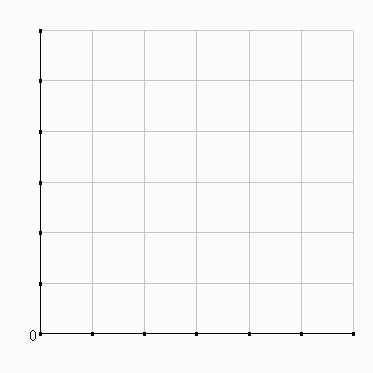| Example: P=8,6, Q=2,3 MR = DTR/DQ = P + Q.DP/DQ
B = revenue lost by
selling the rest of the output for a lower price. |
 |
|
Monday, April 01, 2013 |
What we have seen so far: Competition is a powerful force for efficiency.
But:
(1) sometimes we have market situations which keep us from getting to
the competitive output level
(2) sometimes the competitive output level is not the best place to be.
These are the situations we turn to next
VI. Market power
Focus now is on situations in which markets do not perform as we want them to
Market power: markets are not competitive.
The problem in this case is that we don't reach the competitive market price and
output, even though that is where we want to be.
Market failure: the competitive market price and output is
not where we want to be–it's not optimal.
In this section we cover market power.
Product markets:
D: universally competitive -- lots of
buyers
S: sometimes not true
Resource markets: Sometimes there is market power on either
or both sides of the market. We'll cover that later in the semester.
A. Demand for firms with market power
Learning objectives: Explain and diagram the relationship between demand and marginal revenue. State and apply the formula that relates marginal revenue to price and elasticity of demand.
Market power means the power to influence price by varying output
Key consequence of market power: Firms see
downward sloping D:
Up Q --> Dn P
=> firms are price makers or price
searchers instead of price takers
1. Demand and marginal revenue
Worksheet:
Demand conditions
for firms with market power
--top part
? What does MR tell us?
MR is important because firms use it to maximize profits
? Conceputally, why is MR<P for a firm with simple market power?
Recall in general, P = P(Q)
A firm with the entire demand curve to
itself can use this relationship:
If I sell Q0, each unit will fetch me
P.
If I sell Q0+1, each unit will fetch
me P'.
What will happen to my TR?
I.e., what will my MR be?
| Example: P=8,6, Q=2,3 MR = DTR/DQ = P + Q.DP/DQ
B = revenue lost by
selling the rest of the output for a lower price. |
 |
For firms with
market power, MR < P
because selling extra output reduces the price.
D and MR tell us two different things.
For any Qo:
(1) D tells us what price all Qo units will sell for.
(2) MR tells us the net contribution of unit Qo to TR.
Another way to think of D: D=firm's AR.
D = AR and it is falling
? What must be true about the
relationship between MR and AR if AR is falling?
2. P, MR and elasticity (e)
Recall
(1) MR = P + Q.DP/DQ
(2) |e| = -
(DQ/DP).(P/Q)
(1) => MR = P.[1 + (DP/DQ).(Q/P)]
(2) =>
(DP/DQ).(Q/P) = -1/|e|
Substituting -1/|e| into (1) =>
MR = P(1 - 1/|e|) =>
Note 1: MR is always
< P Note 2: MR > 0 if
and only if e>1
|
 |
Worksheet:
Demand conditions for firms with market power
--bottom part
Note1: monopolist gets industry to self: therefore, efirm = eindustry
Note2: In general, a firm gets less than the entire
industry, so efirm > eindustry
(competitors' Q is a good substitute)
Sum up: market power
=> D slopes down
=> MR no longer = P; MR<P instead
The problem:
(1) Profit maximization => MR=MC
(2) Efficiency => P=MC
If P does not = MR, we can't be sure we have efficiency
VI. Market power
B. Simple monopoly
Learning objectives: Calculate and illustrate profit-maximizing behavior for a simple monopoly. Apply the monopoly markup-pricing rule. Demonstrate how price ceilings can improve efficiency in monopoly industries.
In practice, there are many thorny issues in looking
at monopolies industries:
--defining markets
--defining market power
--barriers to entry
--product variety, etc.
For now, let's assume that these issues are resolved:
The firm has a market to itself (a downward sloping D)
Does not fear entry by other firms
By definition, it produces the only product in the market, so there is
no product variety to worry about
How would such a firm behave?
Simple monopoly => the monopolist charges only one price for all of its output.
Two steps to maximize profits:
Step 1: Choose output (Qm): where MR = MC
Step 2: Choose price: Given Qm, charge what the market will bear
--higher P => can't
sell your profit-maximizing Q.
--lower P => giving up potential revenue.
1. Output, price and profits
Basic analysis: see Monopoly worksheet
Note 1: A secure, simple monopoly never operates in the region of inelastic demand.
Intuition: if demand is inelastic, a monopoly can
clearly raise profit by cutting sales:
Lower Q --> (1) +P and +TR and (2) -TC, so +p for sure
Formally:
(1)
p-max =>
MR = MC
(2) MC is >= 0
(3) MR is >= 0 only if |e| >= 1.